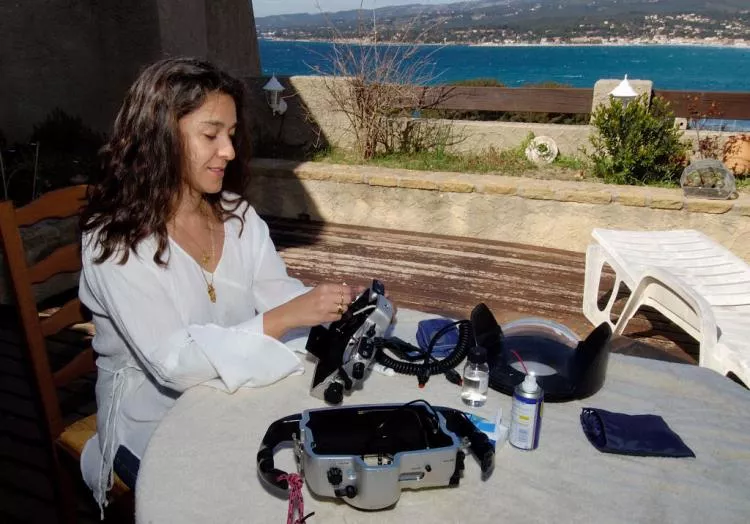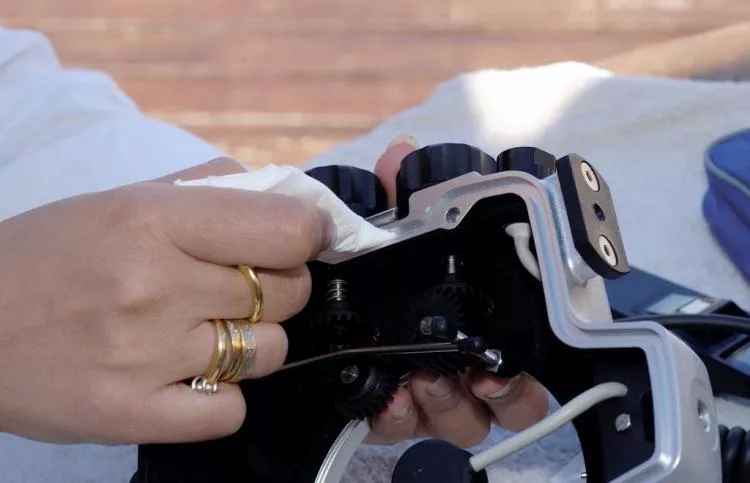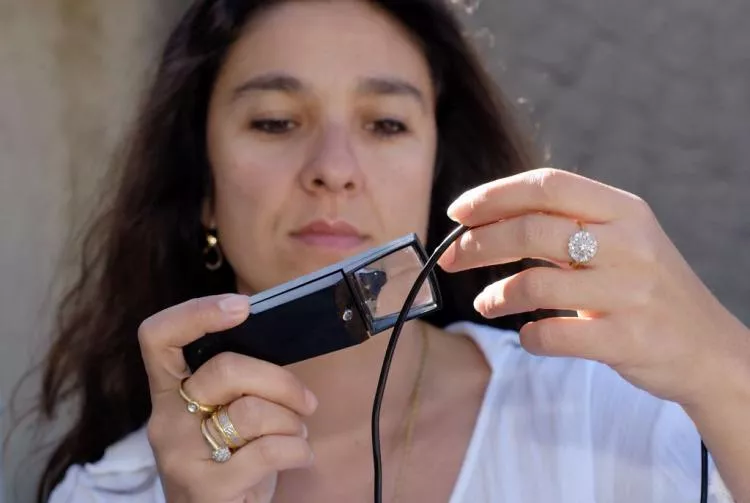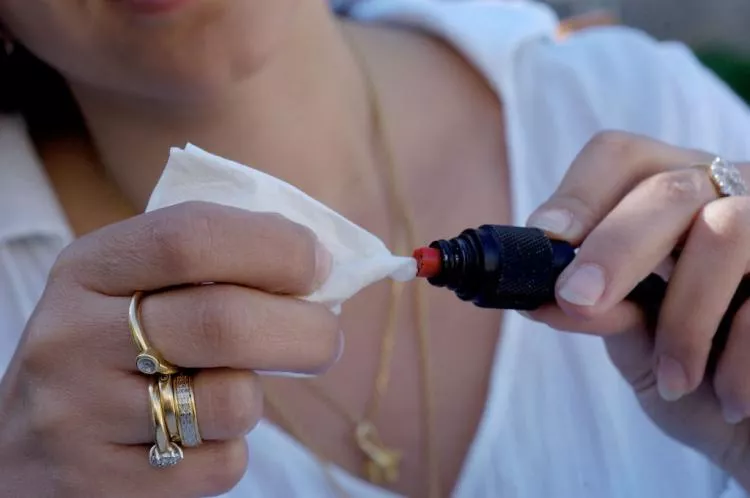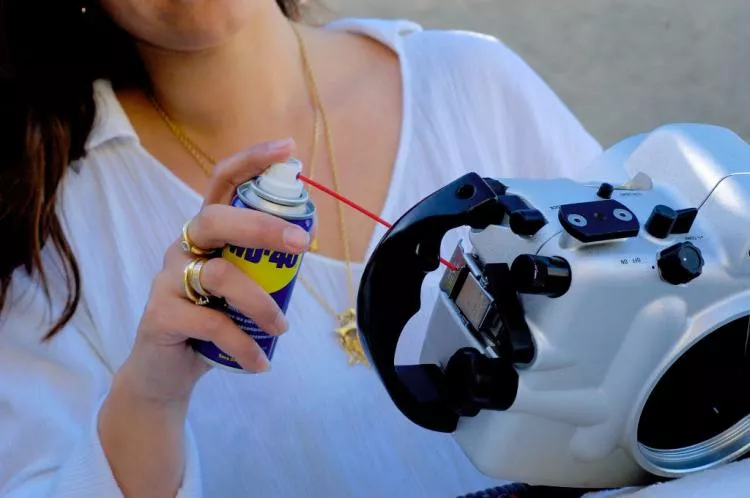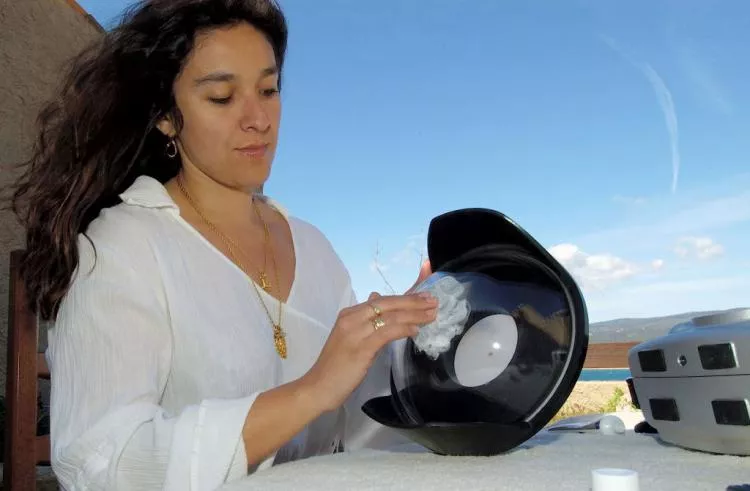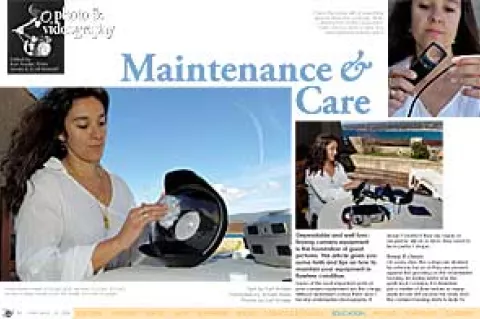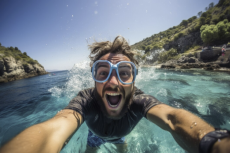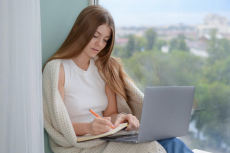Dependable and well functioning camera equipment is the foundation of good pictures. This article gives you some hints and tips on how to maintain your equipment in flawless condition.
Some of the most important parts of your camera equipment are the o-rings. Without watertight o-rings there won’t be any underwater photography. It doesn’t matter if they are made of neoprene, silicon or viton, they need to be in perfect shape.
Keep it clean
On every dive, the o-rings are strained by extreme forces as they are pressed against the grooving on the underwater housing, including water and the particles it contains. It is therefore just a matter of time before so many particles are left around the seals, that the camera housing starts to leak. To prevent this, you need to clean all the o-rings after every film-, memory card or battery change. Additionally, you have to grease the o-rings. Don’t use any sharp objects to remove the o-rings. Use your fingernails. Have a close look at the o-ring, clean it with a paper towel. Never use cotton Q-tips, as they leave behind an ’anti-grease’ surface, which eventually can lead to leaks.
Greasing O-rings
Again, and again the questions arises about how much grease should be applied to the o-rings. The whole point of greasing the o-rings is to make it easier for them to slide into place as an increase in water pressure starts to work on the camera housing. Using neoprene and viton o-rings, only apply silicone sparsely. The o-ring may shine slightly, but there shouldn’t be any visible grease on them. The silicone o-rings need three times as much grease, as they seem to absorb the grease. If you don’t apply enough grease on the silicone o-ring you risk that they are not flexible enough, which may lead to leakages. o-rings made from neoprene or viton can be greased with all kinds of grease, but silicone o-rings should only be greased with the grease that is recommended by the manufacturer.
Otherwise, you may deteriorate the quality. In addition to the large o-rings on i.e. the lids, there are smaller but no less important o-rings on all bushings. These I recommend to be serviced about every 100 hours (underwater). This is usually only possible on more advanced camera houses. On simpler camera housings of synthetic material (except Sea & Sea) this is not possible.
Strobes/flashes
Your strobe/flash devices also need to have their o-rings serviced and cleaned. The pilot lamp is ideal for testing the apparatus. Test all flash settings. The recharge time should of course be longest by the strongest setting. All other settings should allow for quicker recharging. The TTL is best tested when you point the strobe directly into the lens and fire it. If the strobe flashes, but the pilot lamp doesn’t come on, you have a circuit contact problem. The reason for such problems are often lack of maintenance. If the contact has grease, moisture, or is oxidized, you will get a short, which will affect the controlling mechanism of the TTL.
Always clean the contacts with alcohol, and keep a spare cable with you. Nothing is worse than finding the ’perfect shot’ and then the strobe fails. To avoid such mishaps you should always test the batteries before entering the water. Battery testers are cheap and easy to buy. Some cameras manufacturers inform you about the batteries’ charge rates, but often just one flash can separate a red from the green light.
After diving
After every dive, you should always rinse the housings in fresh water. When you come home from a dive trip, you should always soak the housing/strobes 30 minutes in water containing white vinegar (about a teaspoon per litre). This is to dissolve all salt crystals. Then, repeat this twice without the vinegar for 30 minutes. After you have rinsed it off for the last time and dried it, you should apply all parts (metal, screws, shafts and bushings) with the anticorrosion formula WD-40.
Remove all o-rings made of neoprene or viton and store separately. This prevents them from loosing their shapes. Then, remove all batteries. Non-removable batteries should be charged. It is best if your charger has a trickle charge setting. Even though some divers feel that this kind of maintenance is time and labor intensive, it will be worth your while—and your camera will not give up when you have the ’perfect shot’ in your frame.
Practical tips for maintenance and care:
- On a regular basis, clean all the o-rings after every film, memory card or battery change.
- The anti-corrosion formula WD-40 is perfect for protection of your equipment. Spray it on all metal parts to avoid salt depositing.
- Rinse your housing after every saltwater dive with freshwater. If you are not going to use the housing within the near future, soak the housing in freshwater to dissolve all salt crystals.
- Especially the humid and salty air near the ocean quickly affects the contact points and batteries on your equipment. Clean the contacts with either sandpaper or cleaning spray. You can also use an eraser.
- To keep a good working connection between the camera and strobe, regularly clean the contact points with alcohol. Often grease from the o-ring will get into the cables or contact points breaking the electric flow.
- To avoid surprises during a dive, always test the strobe, the zoom rings, and the shutter to assure faultless operation.
- Small scratches on acrylic ports can easily be polished off. On glass ports on the other hand, this is not possible. To avoid such scratches, always protect your domes/ports with a neoprene protector.
- To avoid a ”memory effect” and to maintain long-life for your batteries, you should only recharge them when they are almost empty. Modern battery charges often come with a discharge function.
- To ensure that your batteries have sufficient power before you enter the water, you should always test them.Keep all your maintenance tools like silicone grease, o-rings, battery charger, battery tester, etc, in a small waterproof case when you travel.
For workshop information, please visit Amsler’s website at: Photosub.com ■

